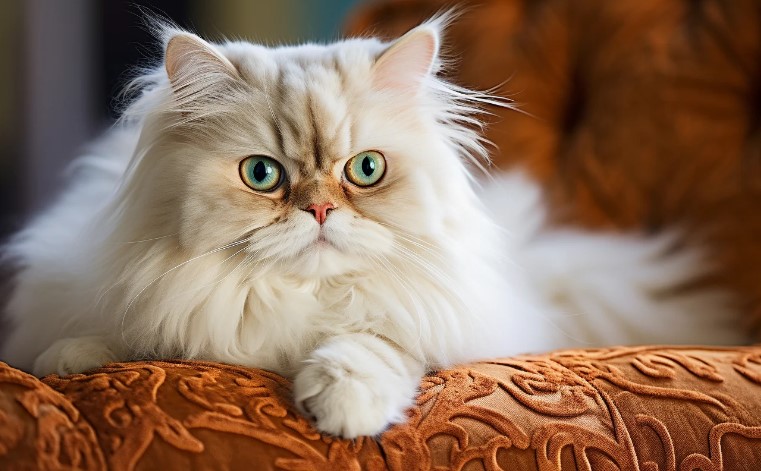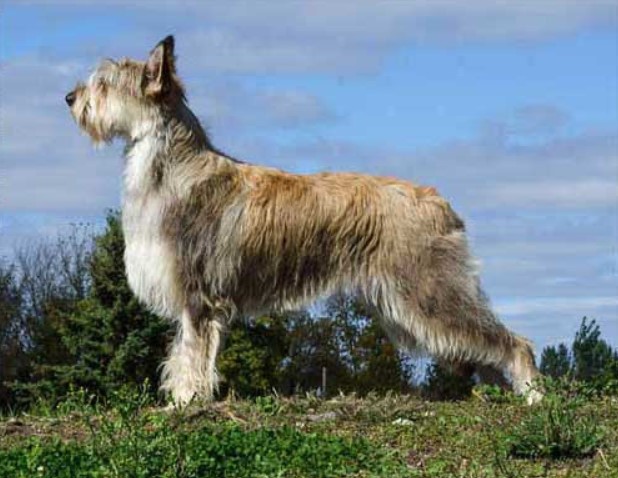
Understanding the Persian Cat Breed: A Guide to Their Characteristics, Care, and Personality
Introduction
Welcome to the enchanting world of Persian cats! These regal felines are renowned for their luxurious coats, sweet temperaments, and distinctive appearances. Whether you’re a seasoned cat lover or a potential Persian cat owner, this guide will provide you with everything you need to know about this beloved breed.
History of Persian Cats
Origins of the Persian Cat Breed
The history of Persian cats dates back to ancient times. Believed to have originated in Persia (modern-day Iran), these cats were prized for their beauty and elegance. They were introduced to Europe in the 1600s, where they quickly gained popularity among the aristocracy.
Historical Significance and Evolution Over Time
Throughout history, Persian cats have been associated with luxury and status. Their distinctive appearance has remained relatively consistent, although selective breeding has refined their features over centuries. Today, they are one of the most recognized and loved cat breeds worldwide.
Influence on Modern-Day Persian Characteristics
Modern Persian cats retain many of the traits that made their ancestors so cherished. Their long, flowing coats, round faces, and gentle dispositions continue to captivate cat enthusiasts. The breed has also diversified into various coat colors and patterns, further enhancing its appeal.
Physical Characteristics
Distinctive Appearance and Features
Persian cats are easily identifiable by their round faces, short noses, and large, expressive eyes. Their stocky bodies and short legs give them a sturdy, balanced appearance. The breed’s most iconic feature is its luxurious, long coat, which requires regular maintenance.
Coat Types and Colors
Persian cats come in a wide range of coat colors and patterns. From solid colors like white, black, and blue to tabby, bicolor, and colorpoint patterns, there’s a Persian cat to suit every aesthetic preference. Their coats are dense and silky, adding to their regal look.
Facial Structure and Body Proportions
The Persian’s flat face, also known as brachycephalic, is a result of selective breeding. This unique facial structure contributes to their charming, almost doll-like appearance. Their bodies are compact and well-muscled, giving them a robust yet elegant look.
Personality Traits
Temperament and Behavior of Persian Cats
Persian cats are known for their calm and gentle nature. They enjoy lounging around the house and are generally quiet and well-behaved. Their laid-back attitude makes them excellent companions for those seeking a peaceful, affectionate pet.
Affectionate Nature Towards Owners
Persians are incredibly affectionate with their owners. They love to be petted and often seek out their human companions for cuddles and attention. Despite their aristocratic appearance, they are friendly and loving cats that form strong bonds with their families.
Adaptability to Different Environments
Persian cats adapt well to various living environments, whether it’s a bustling household or a quiet apartment. They are generally content as long as they have a comfortable place to rest and receive plenty of love from their owners. However, they do prefer a stable, predictable routine.
Grooming Needs
Importance of Grooming for Persians
Regular grooming is essential for Persian cats due to their long, thick coats. Daily brushing helps prevent matting and reduces shedding. It also provides an opportunity to check for any skin issues or parasites, ensuring your Persian stays healthy and comfortable.
Daily Care Routine for Their Long Coats
Establishing a daily grooming routine is crucial for Persian cat owners. Use a wide-toothed comb and a slicker brush to gently remove tangles and loose fur. Pay special attention to areas prone to matting, such as behind the ears, under the legs, and around the neck.
Tips for Maintaining Their Health and Appearance
In addition to daily brushing, regular baths can help keep your Persian’s coat clean and shiny. Use a cat-specific shampoo and ensure thorough rinsing to avoid skin irritation. Regularly trim their nails, clean their ears, and brush their teeth to maintain overall health.
Health Considerations
Common Health Issues in Persian Cats
Due to their unique facial structure, Persian cats are prone to certain health issues. Respiratory problems, dental issues, and eye conditions are common concerns. It’s important to monitor your Persian for signs of distress and seek veterinary care when needed.
Preventive Measures for a Healthy Lifestyle
Providing a balanced diet, regular exercise, and routine veterinary care can help prevent many health problems. Ensure your Persian cat is up-to-date on vaccinations and parasite control. Regular check-ups allow for early detection and treatment of potential issues.
Regular Vet Check-Ups and Vaccinations
Schedule annual veterinary visits for your Persian cat. These check-ups are crucial for monitoring their health and addressing any concerns promptly. Vaccinations protect against common feline diseases, and regular dental cleanings can prevent oral health issues.
Feeding Requirements
Dietary Needs and Preferences of Persians
Persian cats have specific dietary needs to support their health and maintain their luxurious coats. High-quality cat food with the right balance of protein, fat, and essential nutrients is vital. Consult your veterinarian to choose the best diet for your Persian’s age and health.
Recommended Food Types and Portions
Opt for premium cat food brands that use natural ingredients. Wet food can be beneficial for hydration, while dry kibble helps with dental health. Feed your Persian cat measured portions according to their weight and activity level to prevent obesity and ensure they receive proper nutrition.
Avoiding Foods Harmful to Their Health
Some foods can be harmful to Persian cats, including chocolate, onions, garlic, and grapes. Avoid feeding your cat human food and stick to their specially formulated diet. Ensure they have access to fresh water at all times to stay hydrated.
Exercise and Play
Encouraging Physical Activity in Persian Cats
While Persian cats are known for their relaxed demeanor, they still need regular exercise to stay healthy. Encourage playtime with interactive toys, laser pointers, and feather wands to keep them active and engaged.
Suitable Toys and Activities for Indoor Play
Persian cats enjoy a variety of toys, from simple balls and mice to more complex puzzle toys. Cat trees and scratching posts provide opportunities for climbing and scratching, which are natural behaviors for cats. Rotate toys regularly to keep their interest.
Balancing Exercise with Relaxation Time
Persian cats need a balance of exercise and rest. Ensure they have cozy spots to relax and unwind after playtime. Creating a stimulating environment with plenty of opportunities for both activity and relaxation will keep your Persian cat happy and healthy.
Living Environment
Creating a Comfortable Space for Persian Cats
A comfortable living environment is essential for a Persian cat’s well-being. Provide a quiet, safe space where they can retreat and relax. Soft bedding, cozy blankets, and a warm spot near a window will make your Persian feel at home.
Ideal Living Conditions for Their Well-Being
Persian cats thrive in clean, well-maintained environments. Regularly clean their litter box, food and water dishes, and grooming tools. Maintain a consistent temperature in your home, as Persian cats are sensitive to extreme heat and cold.
Safety Precautions for Indoor Environments
Keep your Persian cat indoors to protect them from outdoor hazards. Ensure windows and balconies are secure to prevent accidents. Indoor plants should be non-toxic, and any small objects that could be swallowed should be kept out of reach.
Training and Socialization
Training Methods for Persian Cats
Training Persian cats can be a rewarding experience. Use positive reinforcement techniques, such as treats and praise, to encourage desired behaviors. Start with basic commands like “sit” and “come,” and be patient and consistent in your training efforts.
Socializing Them with Other Pets and People
Early socialization helps Persian cats feel comfortable around other pets and people. Introduce them gradually and supervise interactions to ensure positive experiences. Encourage gentle handling and respect their personal space to build trust and confidence.
Building Trust and Establishing Boundaries
Building a strong bond with your Persian cat requires time and patience. Respect their boundaries and allow them to approach you at their own pace. Consistent routines and positive interactions will help establish trust and a sense of security.
Breeding and Adoption
Responsible Breeding Practices for Persians
If you’re considering breeding Persian cats, it’s crucial to follow responsible practices. Ensure both parents are healthy and free of genetic conditions. Provide proper care for the mother and kittens, and work with a veterinarian to monitor their health.
Considerations Before Adopting a Persian Cat
Adopting a Persian cat is a long-term commitment. Consider factors like grooming needs, potential health issues, and the time and resources required for their care. Ensure you’re prepared to provide a loving and stable home for your new feline friend.
Finding Reputable Breeders or Adoption Centers
When looking for a Persian cat, seek out reputable breeders or adoption centers. Research their practices, ask for references, and visit their facilities if possible. A responsible breeder or adoption center will prioritize the health and well-being of their cats.
Famous Persian Cats
Notable Persians in History and Popular Culture
Persian cats have left their mark on history and popular culture. Famous Persians, such as “Mr. Tinkles” from the movie “Cats & Dogs” and “Snowbell” from “Stuart Little,” have captured the hearts of audiences worldwide. These iconic cats highlight the breed’s charm and elegance.
Their Impact on Society and the Cat Fancy World
Persian cats have significantly impacted the cat fancy world, often dominating cat shows with their striking appearance and gentle demeanor. Their popularity has also led to increased awareness of proper breeding practices and the importance of responsible pet ownership.
Iconic Persian Cat Characters in Literature and Media
In addition to film, Persian cats feature prominently in literature and media. From classic novels to children’s books, their regal presence adds a touch of sophistication and allure to any story. These characters continue to inspire and delight readers of all ages.
Conclusion
Persian cats are cherished for their luxurious coats, sweet personalities, and captivating charm. Understanding their unique characteristics, care needs, and history enhances the joy of owning and caring for these beloved feline companions. Whether you’re a potential owner or simply a cat enthusiast, Persian cats offer endless delight and companionship.
FAQs (Frequently Asked Questions)
- Are Persian cats suitable for families with children?
- Yes, Persian cats can be gentle and tolerant of children. They generally enjoy a calm environment, so supervision is necessary to ensure both the cat and child’s safety during interactions.
- Do Persian cats require frequent grooming?
- Absolutely, Persian cats have long, thick coats that need daily grooming to prevent matting and maintain their health and appearance. Regular grooming also helps reduce shedding and keeps their coat in pristine condition.
- Are Persian cats prone to specific health problems?
- Yes, due to their unique facial structure, Persian cats are prone to respiratory issues, dental problems, and eye conditions. Regular veterinary check-ups and preventive care are essential to keep these health issues in check.
- Can Persian cats live in apartments?
- Yes, Persian cats adapt well to apartment living. They are generally low-energy and enjoy indoor environments as long as they have enough space to roam, play, and relax.
-
Do Persian cats enjoy being around other pets?
- With proper socialization, Persian cats can get along well with other pets. However, individual personalities may vary, so it’s important to introduce them gradually and ensure positive interactions.
You May Also Like

Berger Picard Dog Breed
January 26, 2024
Essential Tips for Choosing the Right Veterinary Clinic for Your Pet
February 14, 2024
